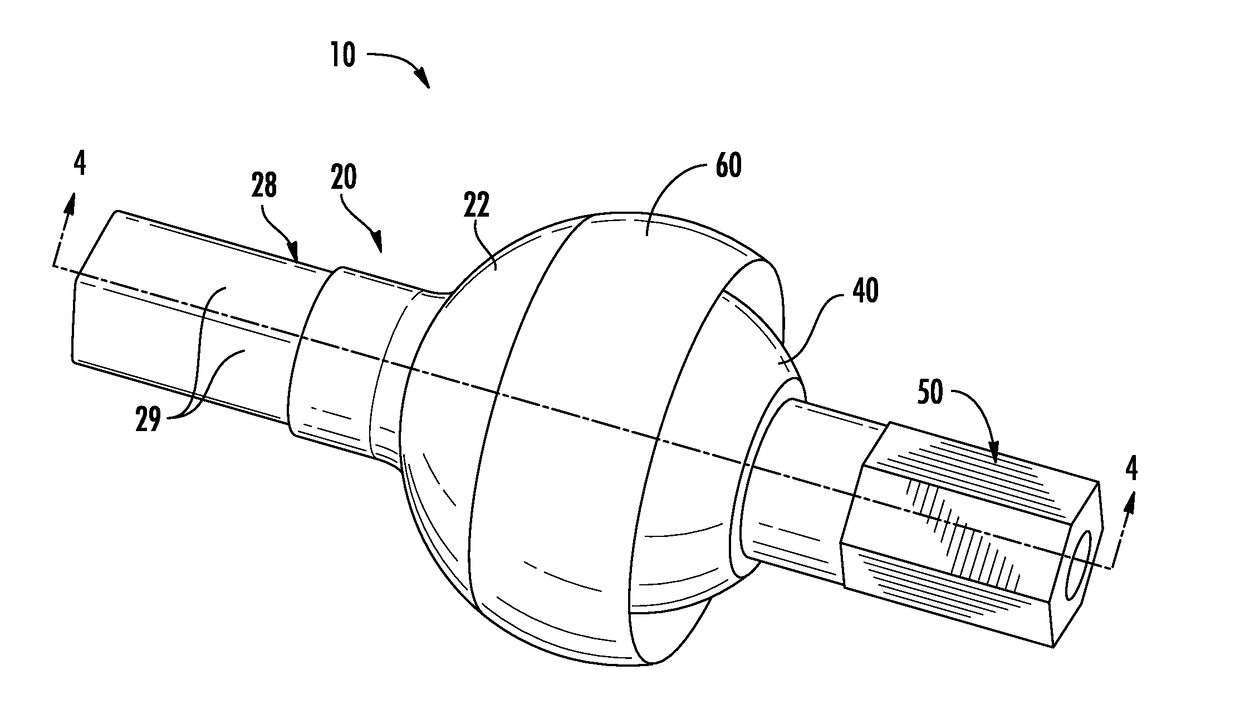Auto-locking ball joint
a ball joint and auto-locking technology, applied in the field of ball joints, can solve the problems of increasing the force of the external member exerted on the ball, difficult for a user to exert a large enough force, etc., and achieve the effect of increasing the locking force of the joint and increasing the locking ability of the auto-locking ball join
- Summary
- Abstract
- Description
- Claims
- Application Information
AI Technical Summary
Benefits of technology
Problems solved by technology
Method used
Image
Examples
Embodiment Construction
[0034]Embodiments of the present disclosure are now described in detail with reference to the drawings in which like reference numerals designate identical or corresponding elements in each of the several views.
[0035]Typically, prior art locking ball joints use frictional engagement of a locking member to frictionally engage a ball and to urge the ball into frictional engagement with a portion of the ball joint. For example with reference to FIG. 1, a prior art locking ball joint 1000 is shown including a collar 1010, a ball end 1020, and a locking handle 1030. The collar 1010 defines a recess 1012 and a lock opening 1014. The ball end 1020 includes a ball 1022 that is rotatably disposed within the recess 1012 of the collar 1010. The locking handle 1030 includes a locking member 1032 that extends through the lock opening 1014 of the locking collar 1010 to engage the ball 1022. The engagement of the locking member 1032 and the ball 1022 locks ball end 1020 relative to the collar 1010...
PUM
 Login to View More
Login to View More Abstract
Description
Claims
Application Information
 Login to View More
Login to View More - R&D
- Intellectual Property
- Life Sciences
- Materials
- Tech Scout
- Unparalleled Data Quality
- Higher Quality Content
- 60% Fewer Hallucinations
Browse by: Latest US Patents, China's latest patents, Technical Efficacy Thesaurus, Application Domain, Technology Topic, Popular Technical Reports.
© 2025 PatSnap. All rights reserved.Legal|Privacy policy|Modern Slavery Act Transparency Statement|Sitemap|About US| Contact US: help@patsnap.com



